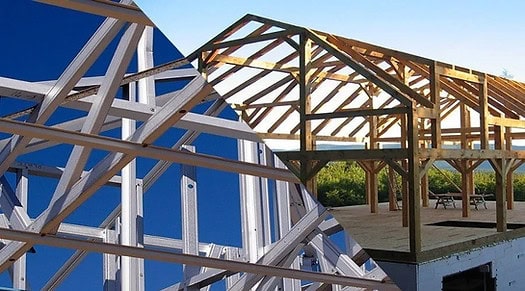When it comes to building a new house, choosing the right construction material is crucial. In recent years, light steel prefab houses have gained popularity as a modern and efficient alternative to traditional wood construction. In this blog, we will explore the benefits of building a light steel prefab house and compare it with wood construction methods.

-
Structural Strength and Durability:
Light steel prefab houses offer superior structural strength and durability compared to wood houses. Light steel frames are made from high-quality galvanized steel, which provides excellent resistance to corrosion, pests, and rot. This makes light steel houses more resilient and long-lasting, ensuring that your investment stands the test of time.
In contrast, wood houses are susceptible to issues such as termite infestation, decay, and warping. These factors can compromise the structural integrity of the house over time, leading to costly repairs and maintenance. Light steel prefab houses eliminate these concerns, providing a reliable and durable housing solution.

-
Fire Resistance:
One of the significant advantages of light steel prefab houses over wood construction is their excellent fire resistance. Steel does not burn, making it a safer choice for homeowners. In the event of a fire, light steel frames will not contribute to the spread of flames, providing occupants with valuable time to evacuate and reducing the risk of extensive damage.
Wood houses, on the other hand, are highly flammable and can quickly catch fire, posing a significant safety hazard. By opting for a light steel prefab house, homeowners can have peace of mind knowing that their property is better protected against fire-related risks.

-
Construction Efficiency:
Building a light steel prefab house offers remarkable construction efficiency compared to wood houses. Prefabrication techniques allow for precise manufacturing of steel components off-site, which are then assembled on-site. This streamlined process significantly reduces construction time and minimizes disruptions to the surrounding environment.
Wood construction, on the other hand, often involves longer construction periods due to the need for on-site cutting, shaping, and assembly. Inclement weather conditions can further delay the construction process. Light steel prefab houses eliminate these delays, allowing homeowners to move into their new homes faster and saving time and money.

-
Sustainability:
Light steel prefab houses are also a sustainable choice compared to wood houses. Steel is a recyclable material, which means that it can be repurposed and reused at the end of its lifecycle. This reduces waste and minimizes the environmental impact of construction.
In contrast, wood construction involves the harvesting of trees, which contributes to deforestation and habitat loss. By choosing a light steel prefab house, homeowners can contribute to sustainable building practices and the preservation of natural resources.

Conclusion:
Building a light steel prefab house offers numerous benefits over wood construction. It provides superior structural strength and durability, excellent fire resistance, construction efficiency, and sustainability. By opting for a light steel prefab house, homeowners can enjoy a safe, durable, and environmentally friendly living space.



